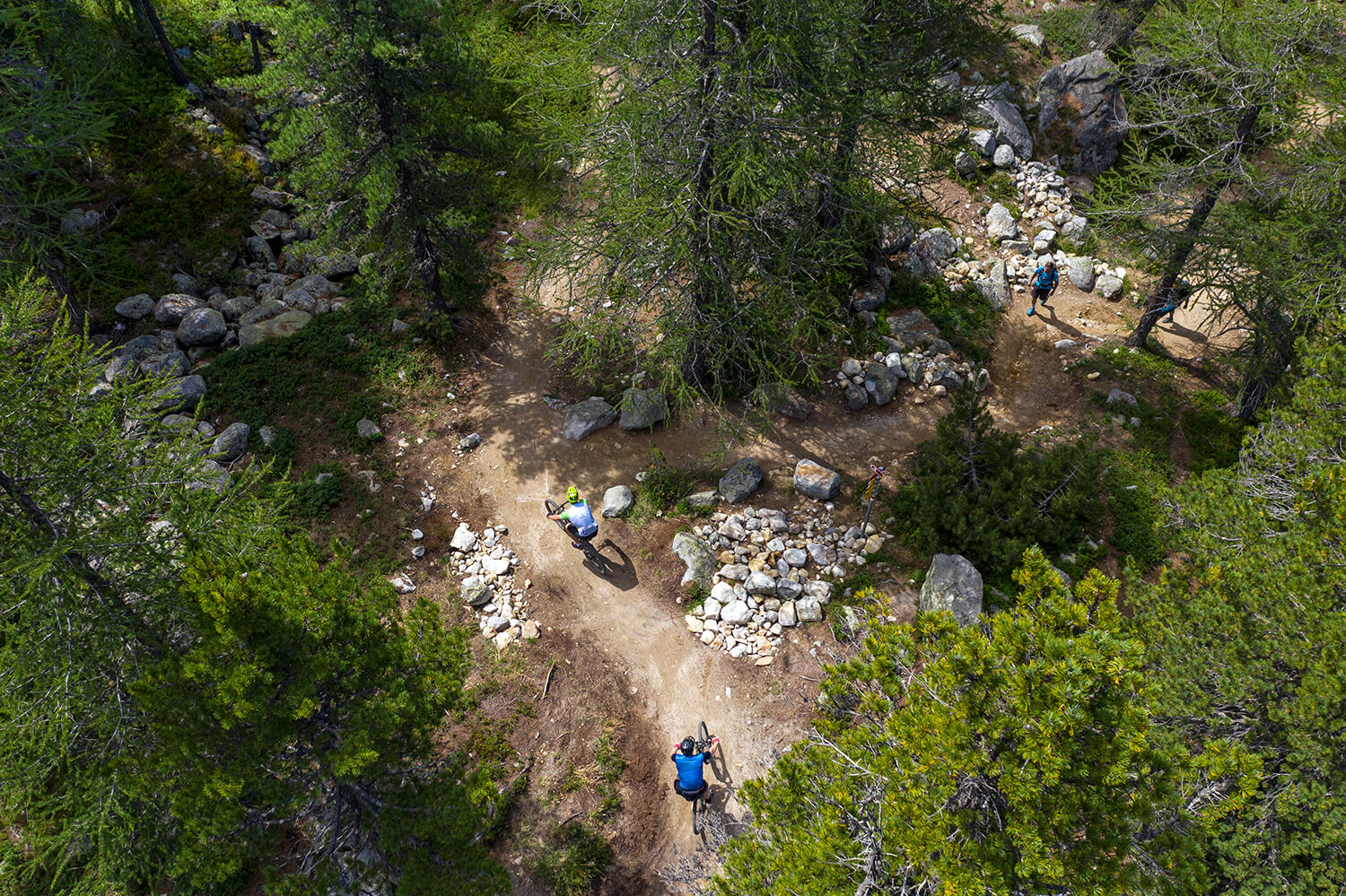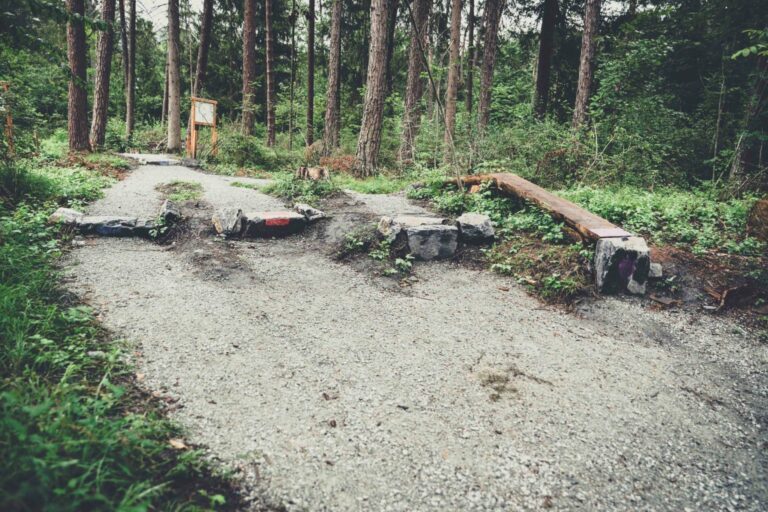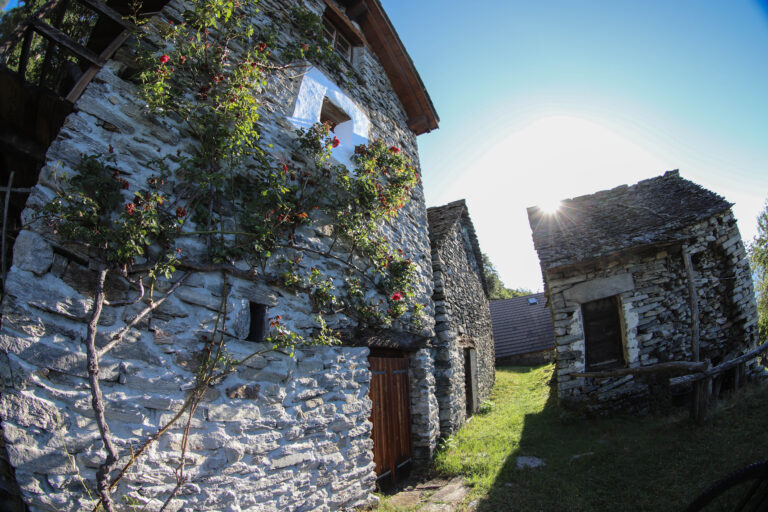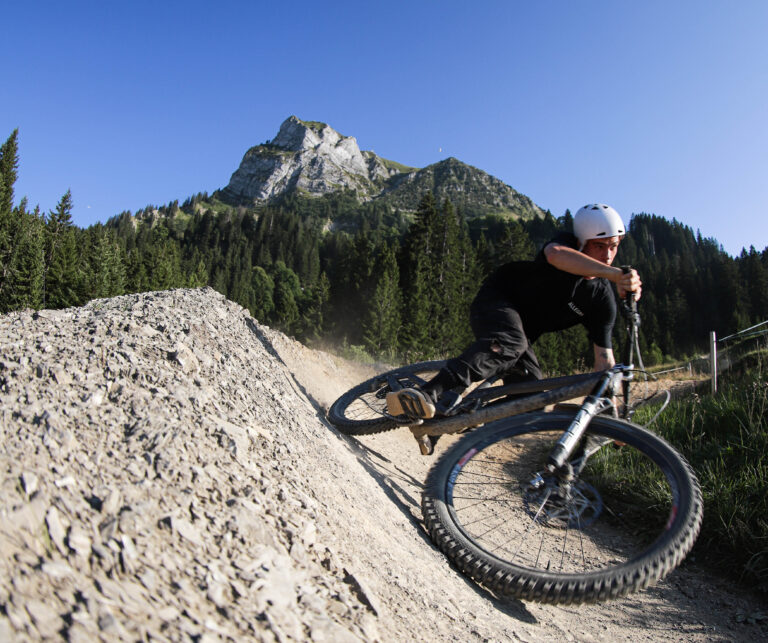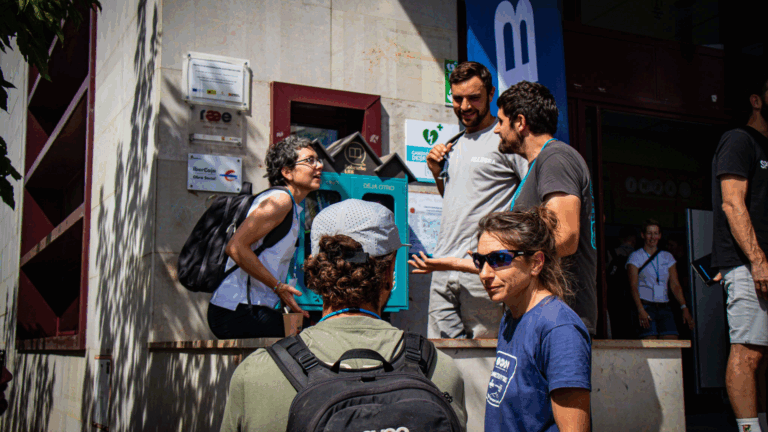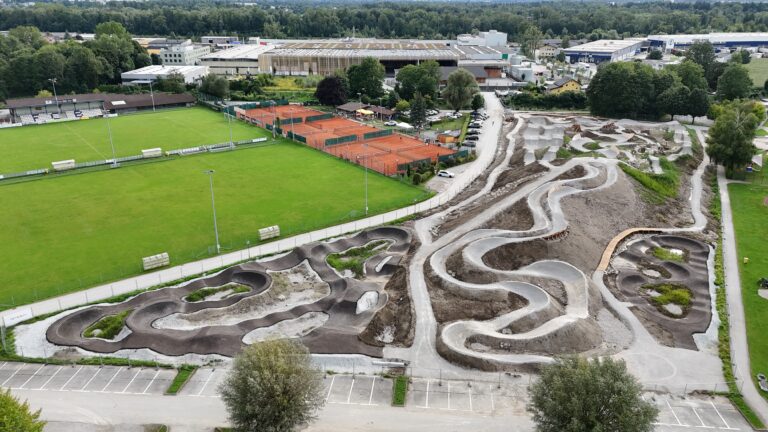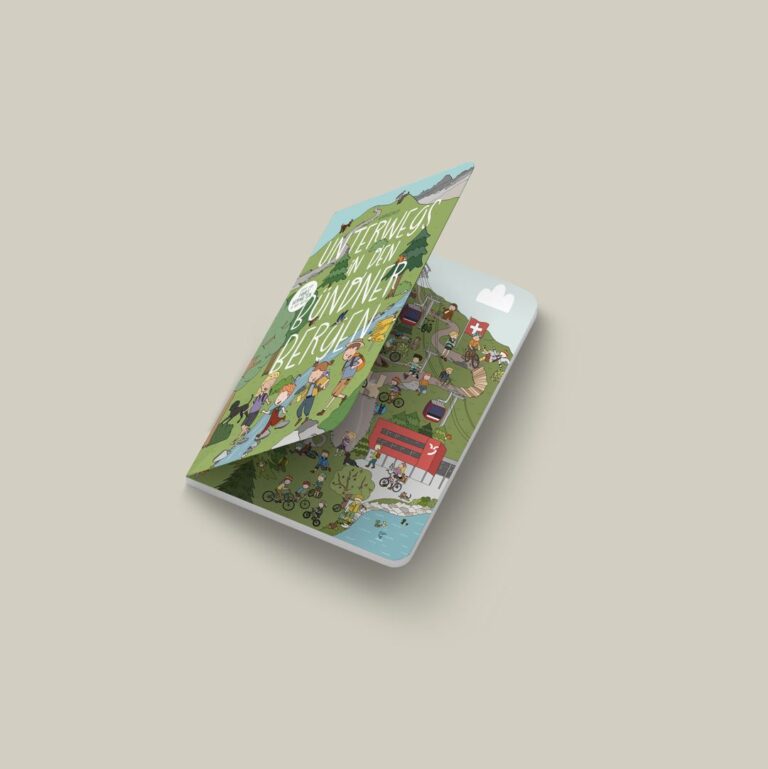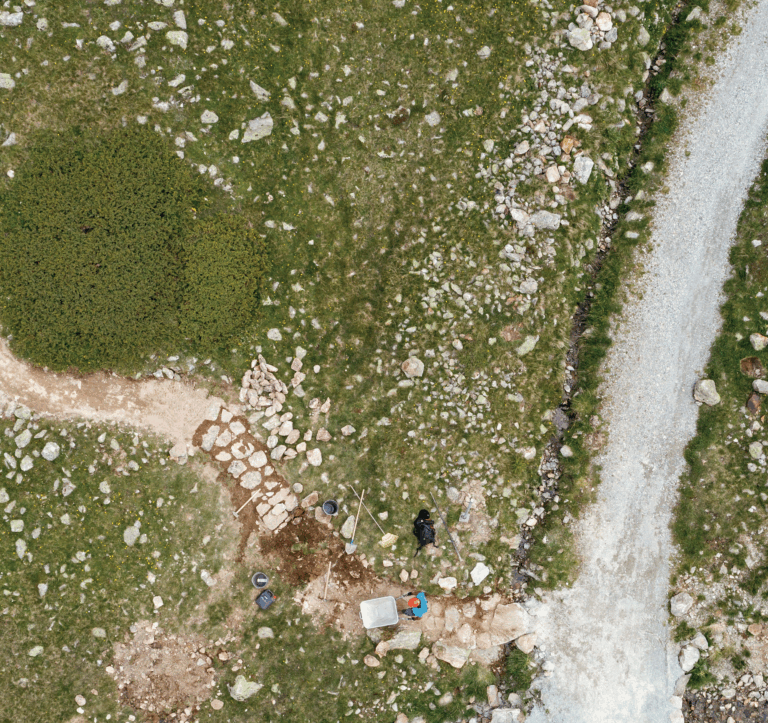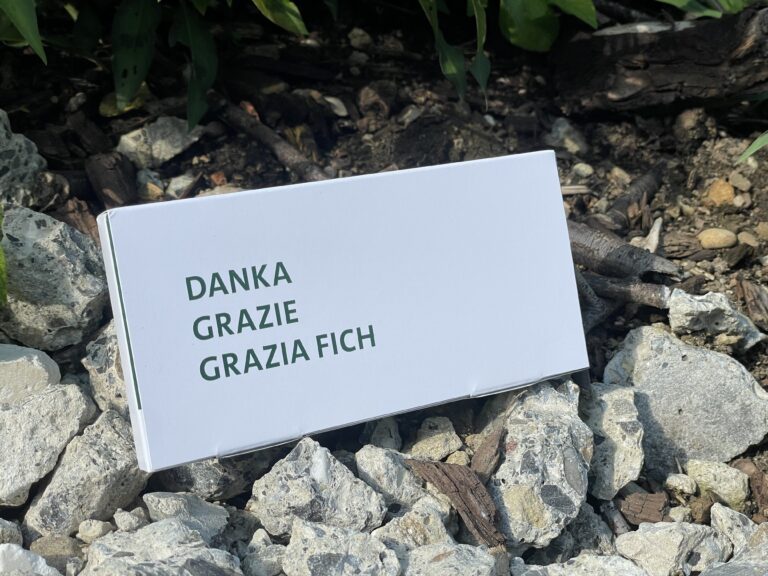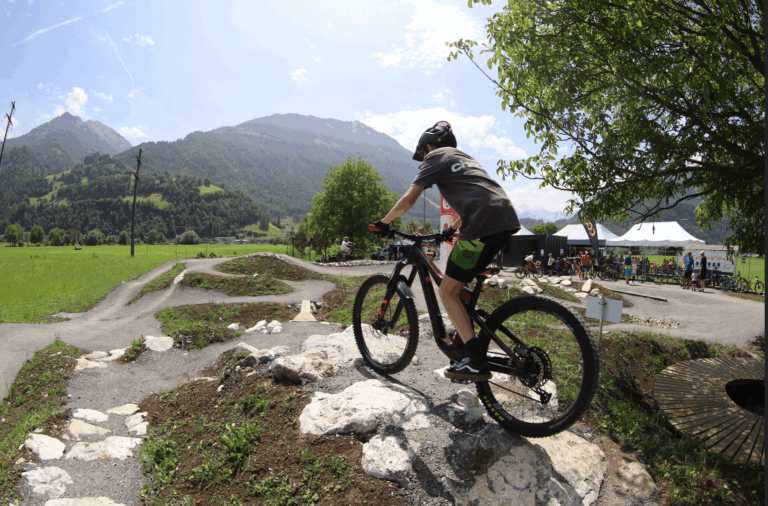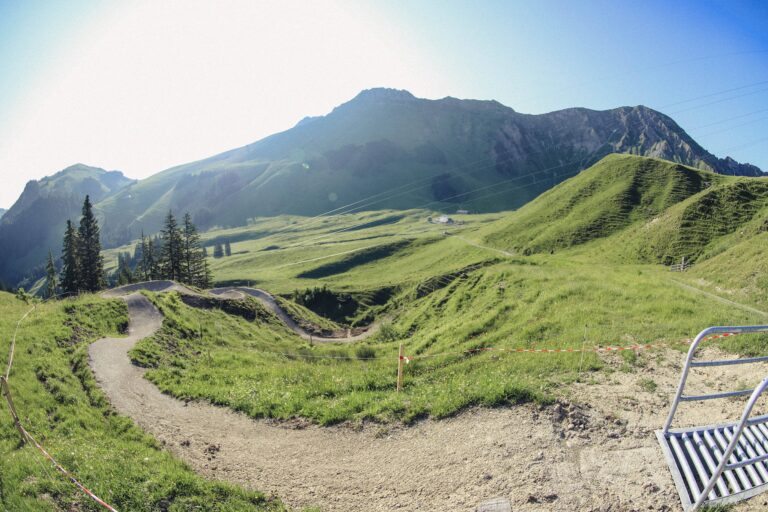Long before the term "coexistence" emerged in discussions about recreational and sporting use, the paths in the Alps were simply lifelines. Shepherds, farmers, traders, and travelers used the same trails – often without any markings and without any real separation of uses. These shared paths expressed a time when survival and social networking were paramount. Consideration was a given, as everyone depended on each other: a damaged path could become a problem for everyone.
THE BREAKFAST OF LEISURE CULTURE AND FIRST TALKS ABOUT COEXISTENCE
With the changes in the 20th century and the increasing interest in recreation in nature, the picture changed. Hike became a popular leisure activity. Purely functional paths became places of encounter and recreation. At the same time, tensions arose for the first time as new actors with different demands entered the paths:
- Hikers: Looking for peace and nature experiences.
- Mountaineers:inside: Used the paths as access to climbing areas, huts or glaciers.
- Mountain bikers: Opened a quite new dimension of mobility and sportiness, but often at a higher speed and with a sleek driving style.
- Alpine farming and nature conservation: Concerned about the sustainable use of the paths and the preservation of the natural area.
- Other path users: With riders, dog owners, and later trail runners, among others, there were a multitude of new people seeking recreation on the trails.
In the 1980s, the first guests appeared on the hiking trails with their mountain bikes – a phenomenon that sparked new discussions on the Alpine trails: Suddenly, people with different usage habits found themselves confronted. It became clear: a blance was needed.
In many regions, there was even discussion about whether certain groups should be banned from the trails. Instead of bans, however, a movement based on the principles of coexistence developed in parts of Switzerland.
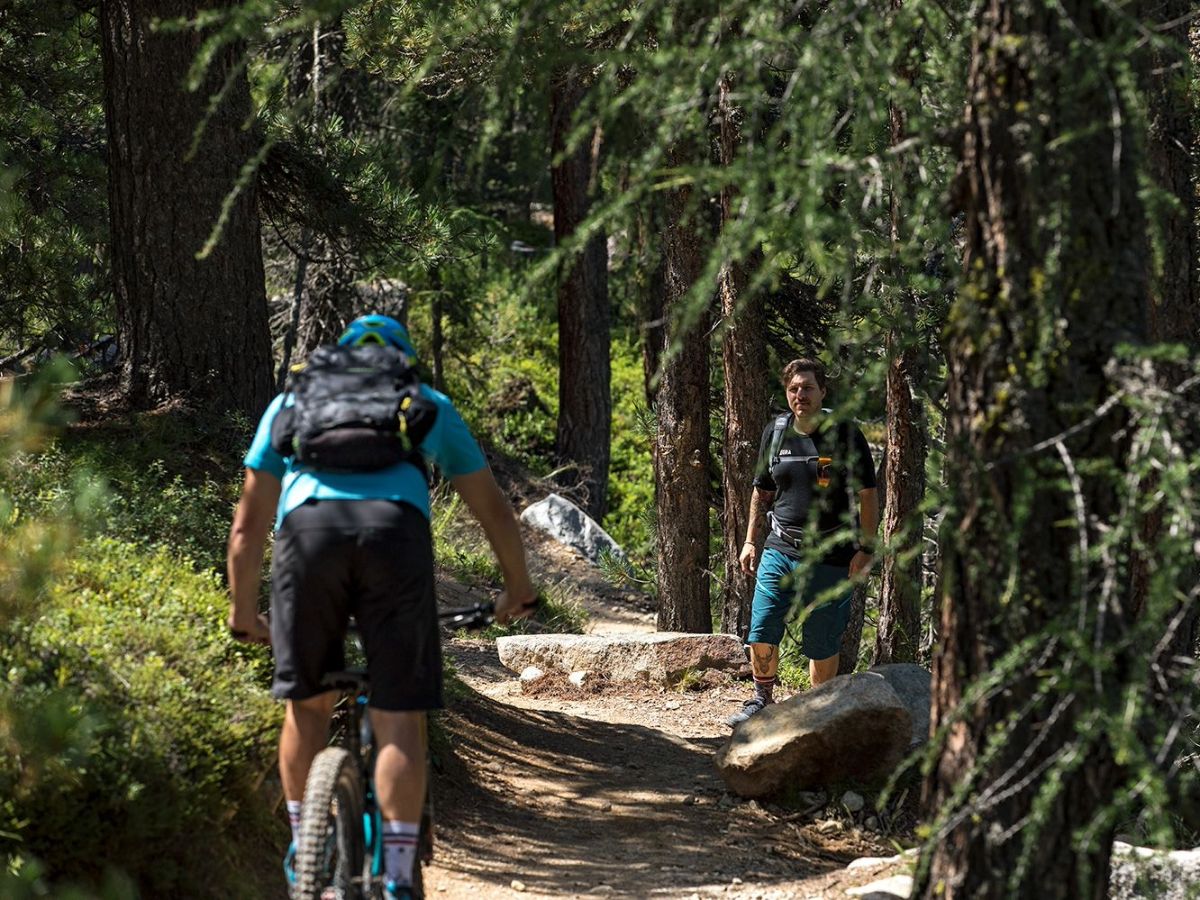
THE BIRTH OF MODERN COEXISTENCE CONCEPTS
As early as the 1990s, the first ideas emerged on how paths could be used jointly by different user groups with minimal conflict – without any group feeling disadvantaged. The key words were: Consideration, communication and shared responsibilityA wide range of interest groups – from hiking clubs to local authorities and sports enthusiasts – entered into a dialogue. Their goal: Preservation of the natural environment and a respectful interaction on the trails. This cooperative approach marked the beginning of a new era in trail management practice.
A central point was – and still is – that conflicts on the paths not only with blanket bans or strict regulations Rather, the problem had to be solved Awareness of shared responsibility and mutual consideration The aim was to create spaces in which different needs – be it the quiet enjoyment of a mountain path or the dynamic discovery of a technical trail – equal side by side can exist.
This basic attitude was later concretized in the Position paper “Coexistence of hiking and cycling/mountain biking“: In 2010, key national actors published their joints Understanding for a considerate coexistence – including the Swiss hiking trails, the BFU Accident Prevention Advisory Centre, Swiss Cycling, SwitzerlandMobility, the Swiss Alpine Club SAC, Swiss Cable Cars, Switzerland Tourism, and the Swiss Tourism Federation. Shared use of trails is generally encouraged, subject to certain rules:
- Shared use of paths is often possible. Bwith different use of the infrastructure, where necessary, to strive for a sensible unbundling.
- The aim is a holistic, coordinated route network planning involving all stakeholders andd BConsideration of space and nature conservation.
- Es will Rule of conductn Recommended for people on foot or by mountain bike.
In this sense, coexistence no complete goal, but a dynamic process. It thrives on cooperation and mutual respect – both on the path and in the figurative sense.
GRAUBÜNDEN AS PIONEERS IN THE SIGN OF COEXISTENCE
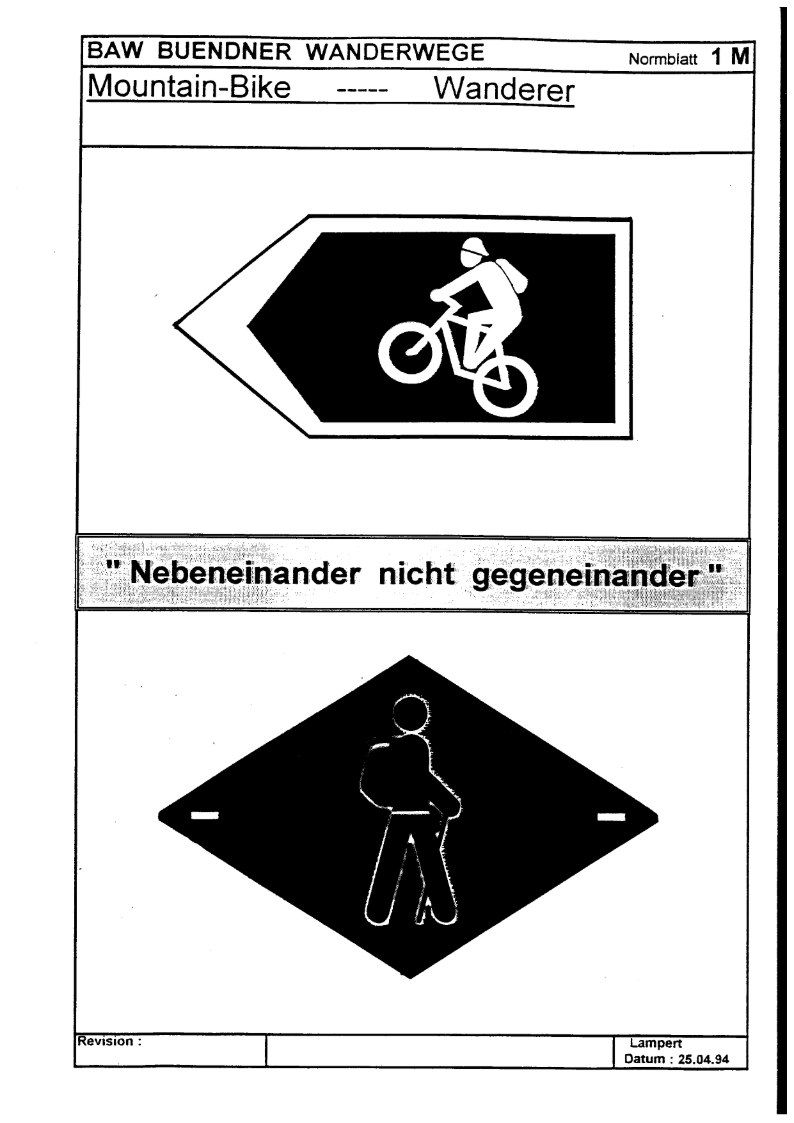
Graubünden, with its impressive landscapes and deep-rooted mountain culture, quickly became a pioneer in the shared use of trails. As early as 1994, the "Graubünden Trails" project formulated initial ideas for how to achieve respectful coexistence between different user groups on hiking trails. The canton relied not on bans but on dialogue – driven by consideration and the conviction that coexistence is a way of life.
With the growth of mountain bike tourism from the late 1990s onwards, the potential for land use conflicts also increased in the mountain canton. Graubünden responded in 2009 with the model project Graubünden.bikeThe aim was to establish the canton as Europe's leading biking destination – and at the same time to promote community on the trails.
The operational implementation was ALLEGRA Switzerland under the direction of Darco CazinAs a strategic partner, ALLEGRA coordinated infrastructure planning, stakeholder dialogue, communication strategies, and much more. Existing trails were opened to bikes where appropriate, signaled, structurally adapted in some areas, or separated as needed. A cross-zonal trail network was created in close cooperation with municipalities, forestry, tourism, and agriculture. Quality, landscape experience, and safety were paramount.
In 2017, the commitment deepened with the Fairtrail Initiative – today under the direction of ALLEGRA and coexistence expert Kevin SuhrSince then, the focus has been on dialogue between users and promoting mutual understanding – with information campaigns, on-site activities and training for guest services, administration and agriculture.
“The future belongs to the regions that ensure that different people find their place in the landscape.”
– Darco Cazin, Founder ALLEGRA
In addition, ALLEGRA initiated the ALLEGRA Academy – a training network for professionals from construction, tourism, and administration. Topics such as sustainable trail construction, conflict management, and strategic planning were taught in practical workshops and consultations – including in destinations such as Arosa, Lenzerheide, and the Engadin.
With these measures, Graubünden is now considered a role model: Over 3,000 kilometers of signposted bike trails, numerous destinations with coordinated offerings, and a measurable reduction in conflicts of use are testament to the success. made Experiences flowed also in the national Mountain bike code from 2022 a - these are broadly coordinated recommendations for behavior, which have been in place in Graubünden for years ago.
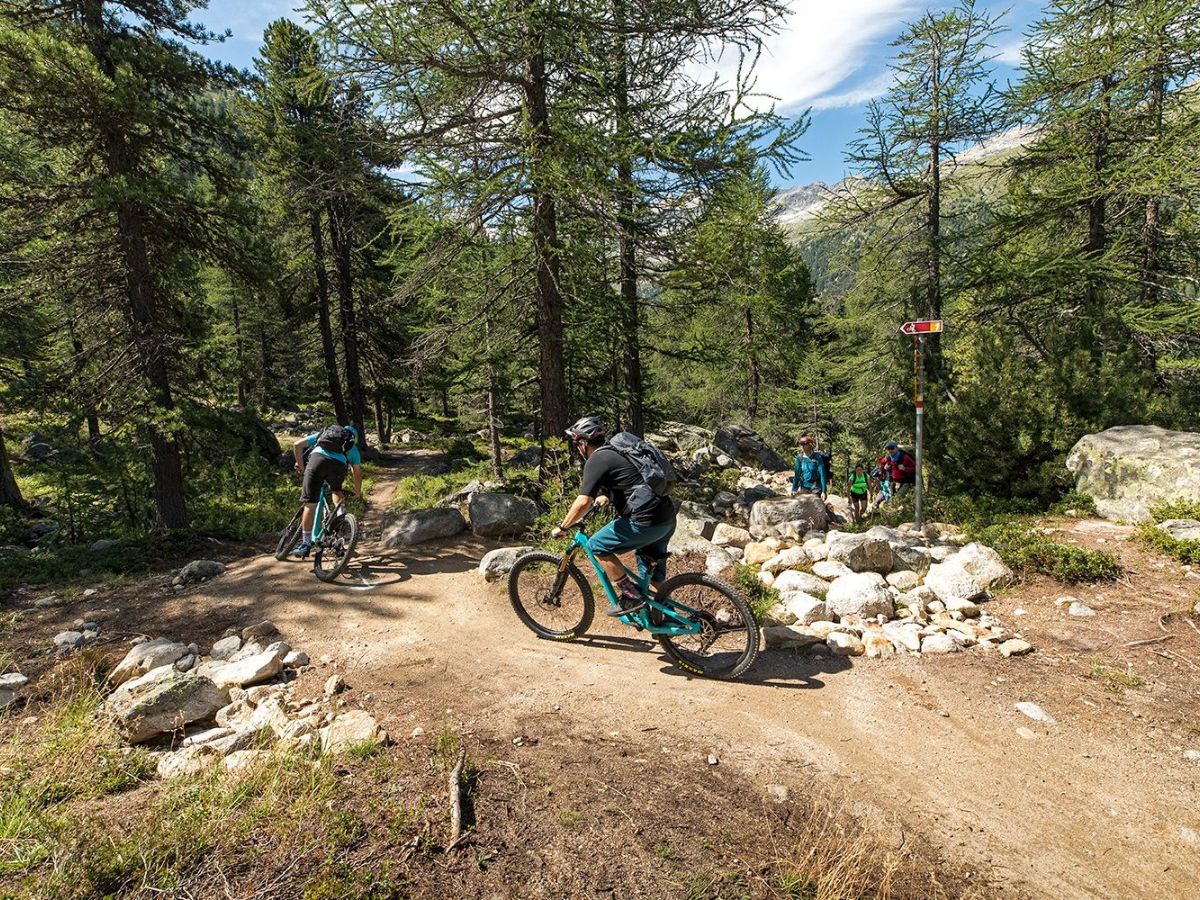
COEXISTENCE IS NOT A SELF-RUNNING EVENT
The multiple use of paths is not always easy in Switzerland. The transfer of experience from other regions, continuous exchange, regular monitoring with appropriate adjustments, and appropriate communication are helpful. While Graubünden as Tourism canton and Pioneer in the field of coexistence already successfully concepts such as Graubünden.bike and Fairtrail established to enable all users of the path to live together respectfully, challenges still appear in other regions - in particular in cantons where the need for local recreation and not the added value of tourism in is in the foreground.
Different legal frameworks and unevenly distributed frequencies on the existing road network must also be taken into account. iICoexistence is often not openly practiced in these areas can be partially also due to lack of infrastructure – in many cases The reason is that itself the corresponding Cantons current straight deal with the topicand therefore a development only becomes visible later.. All this makes it clear that coexistence on paths cannot simply be assumed, but one active planning and regularssA meaningful dialogue requires:.
- Other mountain cantons also demonstrate effective implementation: Valais has been successfully implementing the Fairtrail model since 2023. Building on the experiences from Graubünden, the region is actively working to improve coexistence among all user groups – through education, dialogue formats, and targeted route planning. In Central Switzerland, several cantons will also launch a specifically developed campaign under the Fairtrail umbrella in 2026.
- In Zurich, the campaign “happy together“that creative initiatives from private sources can also have an impact – because the canton itself is currently still in the process of developing its mountain bike strategy.
- In many cantons in the lowlands, mountain biking takes place largely in forests, so it is important to observe the relevant forest laws and regulations. In the canton of Zug, the most recent example, the use of trails was restricted, so it is now important to plan routes and services that are as attractive as possible. From a technical perspective, bans can only have a targeted effect if they are simultaneously attractive offers are createdThe canton of Solothurn is taking a different approach – the government recently stated that Bicycle traffic in the Solothurn Forest should generally be possible on all pathsWhat both cases demonstrate is that without targeted management, mediation and investment in the road infrastructure, coexistence can quickly become a conflict zone.
CONCLUSION: COEXISTENCE AS A LIVING PROCESS
The history of coexistence on Swiss trails demonstrates that shared use is more than just a cliché. It's an ongoing dialogue where tradition meets innovation. From the first shared paths in a time when everyone knew the same route to modern concepts like the Fairtrail in Graubünden, all developments aim for harmonious coexistence.
Coexistence is not a static state, but a process of continuous learning and adaptation. Every step, every path adjustment, and every awareness campaign contributes to preserving the beauty and diversity of our landscapes. This demonstrates that when respect and partnership form the foundation, all paths are open – for hikers, cyclists, alpine farmers, and all those who love nature and its stories.
